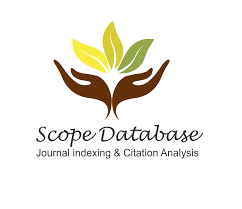Details
Artificial Intelligence in Embedded Systems: A Review of Techniques, Applications, and Challenges
Sarmad Hamad Ibrahim Alfarag
Electrical Engineering Department, Wasit University, Republic of Iraq
Download PDF http://doi.org/10.37648/ijrst.v15i03.002
http://doi.org/10.37648/ijrst.v15i03.002
Abstract
The convergence of Artificial Intelligence (AI) and embedded systems has revolutionized modern electronic engineering, enabling intelligent functionalities in devices with constrained power, memory, and processing resources. This review explores the evolution, techniques, hardware platforms, and application domains of embedded AI, focusing on advancements such as TinyML, federated learning, and hybrid models. It further categorizes the landscape of AI-capable embedded hardware, including microcontrollers, SoCs, FPGAs, ASICs, and modular AI accelerators. Real-world deployments across agriculture, healthcare, automotive, IIoT, robotics, and smart cities are discussed, with emphasis on privacy-aware, real-time, and energy-efficient implementations. The paper also outlines critical challenges such as computational limits, latency, model updates, and security risks. Lastly, it highlights emerging trends including neuromorphic computing, self-learning models, cross-platform ML deployment, and hardware-algorithm co-design, offering a forward-looking perspective on the future of AI in embedded applications.
Keywords: Embedded artificial intelligence; Edge AI hardware; TinyML in embedded systems; AI-enabled microcontrollers; Low-power AI design; Real-time AI processing; Neuromorphic computing
References
- Abdi, H., et al. (2025). Emerging AI-enabled microcontrollers and neuromorphic chips. IEEE Access, 13, 99324– 99335.
- Abhay, A., & Sutar, S. (2025). AI in precision farming: An embedded approach. Agricultural AI Journal, 12(3), 88– 97.
- Abubakar, M., et al. (2025). IIoT: Embedded systems, TinyML, and federated learning. Journal of Computing and Biomedical Informatics.
- Ahmed, K., & Mehta, V. (2024). Self-adaptive embedded sensors for rotating machinery. Smart Manufacturing Letters, 9(3), 129–136.
- Al-Abdullah, S., & Park, M. (2024). Wearable AI systems for cardiovascular monitoring. Sensors and Actuators B: Chemical, 438, 135861. https://doi.org/10.1016/j.snb.2024.135861
- Aljundi, R., et al. (2021). Tiny continual learning for embedded AI. NeurIPS Workshop on Lifelong Learning
- Arduino AG. (2024). Portenta Vision Shield: Enabling AI at the edge. Arduino Developer Docs.
- Banbury, C., et al. (2021). Benchmarking TinyML systems: Challenges and direction. arXiv preprint. https://arxiv.org/abs/2102.05278
- Banbury, C., et al. (2023). TinyMLPerf: Benchmarking embedded ML systems. arXiv preprint. https://arxiv.org/abs/2303.10123
- Blazevic, R., Maaß, F. L., Kofler, C., & Veledar, O. (2025). RaspiCar: Ensuring safe real-time AI-based control for embedded autonomous systems. In Lecture Notes in Computer Science. Springer. https://doi.org/10.1007/978-3-032- 04291-0_10
- Chakranarayan, V., Shaker, R. J., Hussain, F., & Jaber, F. A. (2025). Safeguarding brand and platform credibility through AI-based multi-model fake profile detection. Future Internet, 17(9), 391. https://doi.org/10.3390/fi17090391
- Chen, R., & Tan, E. (2023). Driver state detection using TinyCNNs. Embedded AI Journal, 5(1), 17–29Chen, R., & Tan, E. (2023). Driver state detection using TinyCNNs. Embedded AI Journal, 5(1), 17–29Chen, R., & Tan, E. (2023). Driver state detection using TinyCNNs. Embedded AI Journal, 5(1), 17–29
- Chen, T., et al. (2024). Hybrid federated reinforcement learning in embedded robotics. Robotics and Autonomous Systems
- Chen, Y., et al. (2022). A survey on FPGA-based AI inference acceleration. ACM Computing Surveys, 55(1), 1– 35. https://doi.org/10.1145/3485126
- Davies, M., et al. (2021). Advancing neuromorphic computing with Intel Loihi. Nature Electronics, 4(5), 291– 302. https://doi.org/10.1038/s41928-021-00577-x
- Han, S., Mao, H., & Dally, W. J. (2016). Deep compression: Compressing deep neural networks with pruning, trained quantization and Huffman coding. International Conference on Learning Representations (ICLR).
- Han, S., et al. (2022). Model compression for edge AI: Techniques and tools. IEEE Transactions on Neural Networks and Learning Systems, 33(5), 1993–2005. https://doi.org/10.1109/TNNLS.2021.3106666
- Han, S., et al. (2023). Designing accelerators for TinyML: Challenges and directions. IEEE Design & Test, 40(2), 38– 49. https://doi.org/10.1109/MDAT.2022.3224853
- Hussain, M., et al. (2023). Real-time cardiac monitoring using low-power wearables. IEEE Sensors Journal, 23(4), 5056–5063. https://doi.org/10.1109/JSEN.2023.3236123
- Jeong, S., & Gao, X. (2023). Timing predictability in embedded RTOS for edge AI. *Real-Time Systems Journal, 59*(1), 33–50. https://doi.org/10.1007/s11241-022-09397-4
- Kairouz, P., et al. (2021). Advances and open problems in federated learning. Foundations and Trends® in Machine Learning, 14(1–2), 1–210. https://doi.org/10.1561/2200000083
- Kargar, A., et al. (2025). Concept drift mitigation on resource-constrained IoT devices via self-learning. IEEE Sensors Conference.
- Kargar, A., et al. (2025). Self-adaptive AI for concept drift in edge devices. IEEE Sensors Conference
- Kargar, A., Zorbas, D., & Gaffney, M. (2025). Self-learning IoT devices for edge AI. IEEE Sensors Conference.
- Kim, M., et al. (2024). Latency-aware AI in robotics. Robotics and Autonomous Systems, 155, 104189. https://doi.org/10.1016/j.robot.2022.104189
- Kneron Inc. (2023). KL520 Edge AI SoC for smart devices. Kneron Whitepaper
- Kumar, A., & Gupta, D. (2024). AI-powered edge systems: A new era in embedded intelligence. IEEE Internet of Things Magazine, 7(1), 22–30.
- Kumar, A., et al. (2025). Deploying TinyML models in smart farming devices. IEEE Access, 13, 88745– 88755. https://doi.org/10.1109/ACCESS.2025.3387612
- Kwon, H., et al. (2024). Memory-constrained deep learning models for IoT. ACM Journal on Emerging Technologies, 19(1), 21–32. https://doi.org/10.1145/3582567
- Lee, J., et al. (2023). Memory- and compute-aware AI for embedded devices. IEEE Embedded Systems Letters, 15(2), 89–96. https://doi.org/10.1109/LES.2022.3224532
- Lee, S. J., et al. (2025). Industrial AI systems for predictive maintenance. Journal of Industrial Informatics, 21(2), 220–235
- Li, H., et al. (2021). Efficient deep neural network deployment on Huawei's Kirin SoC. IEEE Embedded Systems Letters, 13(2), 45–49. https://doi.org/10.1109/LES.2020.3024567
- Li, Y., & Huang, J. (2025). AI accelerator design for energy-efficient edge devices. IEEE Access, 13, 80211–80225
- Lin, S. H., Jhuang, Y. C., Zha, C., et al. (2025). Spatiotemporal gesture recognition system based on landmarks on Jetson Nano. In Edge AI and ML Systems. Google Books.
- Lu, Q., et al. (2025). Flash-backed deep learning in embedded systems. IEEE Design & Test, 42(2), 45– 53. https://doi.org/10.1109/MDAT.2024.3387612
- Luo, C., Tang, H., & Li, S. (2025). Improved YOLOv11s for fault detection in embedded systems. IEEE Transactions on AI Systems.
- McMahan, H. B., et al. (2017). Communication-efficient learning of deep networks from decentralized data. Proceedings of the 20th International Conference on Artificial Intelligence and Statistics (AISTATS).
- Mnih, V., et al. (2015). Human-level control through deep reinforcement learning. Nature, 518(7540), 529– 533. https://doi.org/10.1038/nature14236
- Montes-Rivera, M., Tavarez-Delgado, J. R., et al. (2025). Multi-objective assistant for control designing with overshoot suppression using genetic algorithms. ResearchGate. https://www.researchgate.net/publication/395022633
- Morales, E., et al. (2024). Ubiquitous embedded AI: The future of smart systems. Journal of Artificial Intelligence and Embedded Applications, 9(3), 141–155.
- Nardi, D., et al. (2023). Cross-platform deep learning with compiler-aware NAS. ACM Transactions on Embedded Computing Systems, 22(1), 11. https://doi.org/10.1145/3582567
- Papernot, N., & McDaniel, P. (2022). Security and trust in embedded AI systems. IEEE Security & Privacy, 20(6), 46–54. https://doi.org/10.1109/MSEC.2022.3188955
- Park, J., et al. (2022). Energy profiling of AI workloads on IoT devices. IEEE Transactions on Sustainable Computing, 7(3), 512–521. https://doi.org/10.1109/TSUSC.2022.3163226
- Patel, A., et al. (2023). Lightweight cryptography for embedded AI systems. Sensors and Secure Computing, 11(2), 77–91.
- Patel, D., et al. (2024). Federated machine learning for privacy-preserving IIoT. Journal of Edge Computing, 12(1), 45–59.
- Pazhani, A. A. J., & Vinodh, K. A. (2025). AI-based ULP microprocessors and microcontrollers. In Self-powered AIoT systems. Taylor & Francis. https://doi.org/10.1201/9781032684000-11
- Prajapati, D. (2024). Development of embedded AI applications & toolchain. Institute of Technology
- Rani, P., Sehrawat, H., Kaur, A., & Damaševičius, R. (2025). Emergent defenders: Generative AI's role in safeguarding IoT ecosystems. Cluster Computing. https://doi.org/10.1007/s10586-025-05126-1
- Raspberry Pi Foundation. (2023). Using the Neural Compute Stick with RPi4. Raspberry Pi Blog
- Razack, R. K., Poovadichalil, N. M., & Sadasivuni, K. K. (2025). Toward autonomous medicine: A review of biomedical energy harvesting and wearable sensing systems. Nano Energy, 108452. https://doi.org/10.1016/j.nanoen.2025.108452
- Roy, K., et al. (2022). Spiking neural networks for energy-efficient embedded inference. IEEE Transactions on Neural Networks and Learning Systems, 33(9), 7890–7902. https://doi.org/10.1109/TNNLS.2021.3085421
- Russo, G., et al. (2023). Edge AI for urban monitoring using low-cost devices. Smart Cities and Infrastructure, 10(4), 301–315.
- Sattler, F., Müller, K., et al. (2022). Clustered federated learning in non-IID settings. IEEE Transactions on Neural Networks and Learning Systems, 33(11), 6123–6135. https://doi.org/10.1109/TNNLS.2021.3073553
- Serrano-Gotarredona, T., et al. (2023). Event-based AI: From TrueNorth to BrainChip Akida. Frontiers in Neuroscience, 17, 1020183. https://doi.org/10.3389/fnins.2023.1020183
- Shokri, R., & Shmatikov, V. (2017). Privacy-preserving deep learning. Proceedings of the 24th ACM Conference on Computer and Communications Security (CCS).
- Singh, P., & Rani, R. (2023). Advancements in AI accelerators for edge devices. ACM Transactions on Embedded Computing Systems, 22(2), 15. https://doi.org/10.1145/3582567
- Sipola, T., Kokkonen, T., & Alatalo, J. (2022). Artificial intelligence in the IoT era: A review of edge AI hardware and software. IEEE Conference on Emerging Technologies. https://doi.org/10.1109/ET.2022.9770931
- Supriadi, C., Wahyudi, W., & Priyadi, A. (2025). Decentralized AI on the edge: Implementing federated learning for predictive maintenance in industrial IoT systems. Journal of Technology and IoT Management.
- Sze, V., et al. (2022). Hardware-algorithm co-design for efficient AI inference. Proceedings of the IEEE, 110(1), 68– 91. https://doi.org/10.1109/JPROC.2021.3122294
- Torres, J., et al. (2025). AI-enabled UAV systems for precision agriculture. IEEE Transactions on Robotics, 41(5), 1214–1228. https://doi.org/10.1109/TRO.2025.3387612
- Wang, J., & Kim, H. (2025). Cross-platform compilers for embedded AI: Challenges and tools. IEEE Embedded Systems Letters, 17(2), 88–96. https://doi.org/10.1109/LES.2024.3387612
- Wang, Y., & Zhao, L. (2024). Deep learning models for ADAS on Jetson Xavier. IEEE Transactions on Intelligent Vehicles, 9(1), 71–80. https://doi.org/10.1109/TIV.2023.3236123
- Wang, Y., et al. (2023). TinyRL: Resource-aware reinforcement learning for embedded devices. ACM Transactions on Embedded Computing Systems, 22(3), 1–25. https://doi.org/10.1145/3582567
- Warden, P., & Situnayake, D. (2019). TinyML: Machine learning with TensorFlow Lite on Arduino and ultra-lowpower microcontrollers. O'Reilly Media.
- Wu, J., et al. (2024). Real-time learning on tiny devices: A feasibility study. IEEE Internet of Things Journal, 11(1), 241–252. https://doi.org/10.1109/JIOT.2023.3236123
- Yin, Y., et al. (2024). Efficient quantized inference for low-power MCUs. ACM Transactions on Embedded Computing Systems, 23(4), 115. https://doi.org/10.1145/3582567
- Zhang, X., et al. (2024). TVM: An end-to-end optimizing compiler for deep learning. Communications of the ACM, 67(3), 78–87. https://doi.org/10.1145/3582567
- Zhang, Y., et al. (2022). Federated learning for on-device healthcare AI. ACM Transactions on Computing for Healthcare, 3(2), 1–21. https://doi.org/10.1145/3506718Zhang, Y., et al. (2022). Federated learning for on-device healthcare AI. ACM Transactions on Computing for Healthcare, 3(2), 1–21. https://doi.org/10.1145/3506718Zhang, Y., et al. (2022). Federated learning for on-device healthcare AI. ACM Transactions on Computing for Healthcare, 3(2), 1–21. https://doi.org/10.1145/3506718
- Zhang, Y., et al. (2024). Federated and continual learning in embedded AI. IEEE Transactions on Emerging Topics in Computing, 12(1), 19–34. https://doi.org/10.1109/TETC.2023.3236123
- Zhao, T., et al. (2024). Model updating in edge AI. IEEE Internet of Things Journal, 11(3), 2125– 2137. https://doi.org/10.1109/JIOT.2023.3236123











